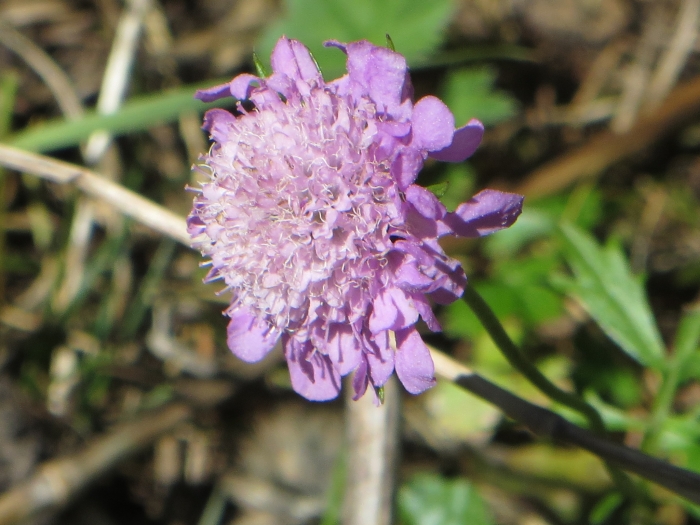Field Scabious
(Knautia arvensis)
Field Scabious (Knautia arvensis)
/
/

Michael Knapp
CC BY 4.0
Image By:
Michael Knapp
Recorded By:
Copyright:
CC BY 4.0
Copyright Notice:
Photo by: Michael Knapp | License Type: CC BY 4.0 | License URL: http://creativecommons.org/licenses/by/4.0/ | Rights Holder: Michael Knapp | Publisher: iNaturalist | Date Created: 2019-09-21T12:20:26-07:00 |




















Estimated Native Range
Summary
Knautia arvensis, commonly known as Field Scabious, is an herbaceous perennial plant. It is native to a wide range of habitats in Europe and Asia, including meadows, grasslands, and open woodland areas, often on calcareous soils. This species typically grows to a height of 10-39 inches (25-100 cm) and features a basal rosette of leaves with flowering stems that rise above. The flat-headed inflorescences bloom from July to September, showcasing small, lilac to pale purple flowers that are highly attractive to pollinators such as bees and butterflies.
Field Scabious is appreciated for its long flowering period and the informal charm it adds to wildflower meadows and naturalistic plantings. It is often used in cottage gardens, borders, and as part of pollinator-friendly gardens. This plant prefers full sun to part shade and thrives in well-drained soils, tolerating dry conditions once established. While it is generally low-maintenance, it may require staking in richer soils to prevent stems from flopping. Field Scabious can be prone to powdery mildew and should be spaced adequately to ensure good air circulation. It is not known for aggressive roots or other significant problems in cultivation. However, it can self-seed prolifically, which may be undesirable in some settings.CC BY-SA 4.0
Field Scabious is appreciated for its long flowering period and the informal charm it adds to wildflower meadows and naturalistic plantings. It is often used in cottage gardens, borders, and as part of pollinator-friendly gardens. This plant prefers full sun to part shade and thrives in well-drained soils, tolerating dry conditions once established. While it is generally low-maintenance, it may require staking in richer soils to prevent stems from flopping. Field Scabious can be prone to powdery mildew and should be spaced adequately to ensure good air circulation. It is not known for aggressive roots or other significant problems in cultivation. However, it can self-seed prolifically, which may be undesirable in some settings.CC BY-SA 4.0
Plant Description
- Plant Type: Herb
- Height: 1.5-3 feet
- Width: 1.5-2 feet
- Growth Rate: Moderate
- Flower Color: Blue, Pink
- Flowering Season: Summer, Fall
- Leaf Retention: Deciduous
Growth Requirements
- Sun: Full Sun
- Water: Medium
- Drainage: Medium, Fast
Common Uses
Bee Garden, Border Plant, Butterfly Garden, Low Maintenance, Rock Garden
Natural Habitat
Meadows, grasslands, and open woodland areas, often on calcareous soils
Other Names
Common Names: Field Scabious, Gypsy Rose, Field Scabiosa, Gypsy’s-Rose
Scientific Names: , Knautia arvensis, Knautia arvensis f. monstruosa, Knautia arvensis var. alpestris, Knautia arvensis var. arvensis, Knautia arvensis var. budensis, Knautia arvensis var. vulgaris, Knautia breindli, Knautia ceretanica, Knautia ligerina
GBIF Accepted Name: